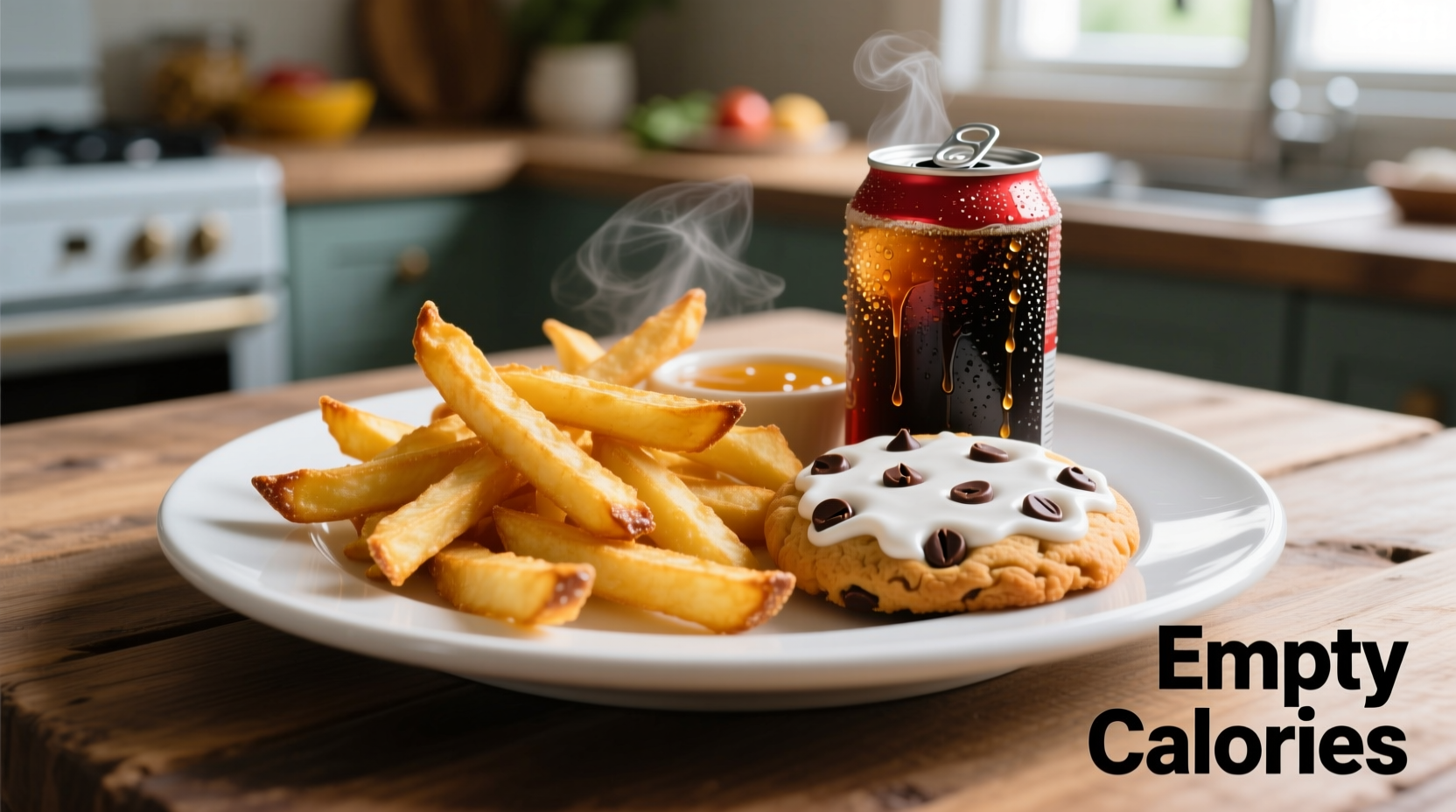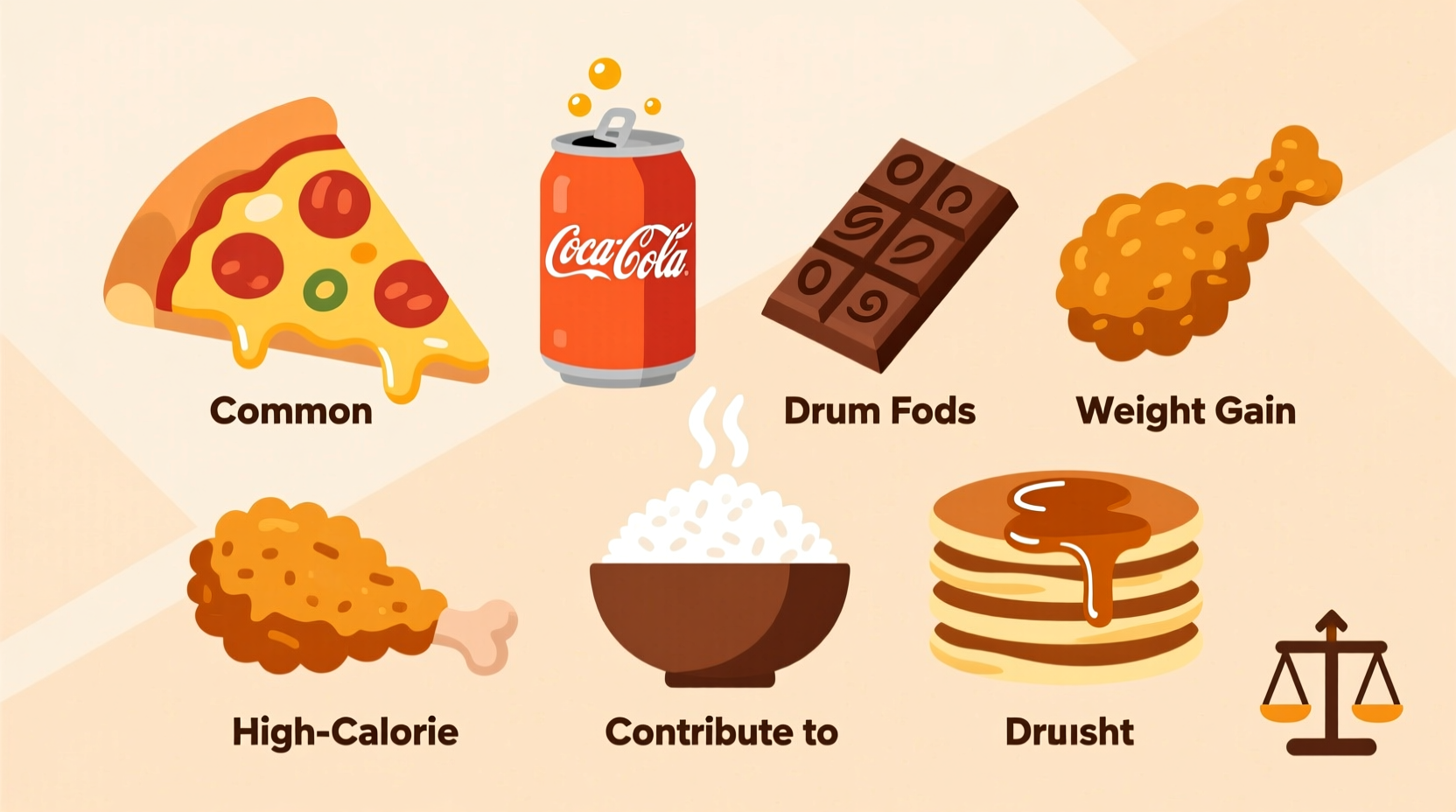Understanding Weight Gain: Beyond Simple Calories
Weight gain occurs when you consistently consume more calories than your body burns. However, not all calories affect your body the same way. Certain foods trigger biological responses that make weight gain more likely through:
- Low satiety despite high calorie content
- Impact on hunger hormones like ghrelin and leptin
- Effects on insulin response and fat storage
- Disruption of normal appetite regulation
The Science Behind Weight-Gain Foods
Research from Harvard T.H. Chan School of Public Health shows that certain food categories consistently correlate with weight gain in long-term studies. The Nurses' Health Study and Health Professionals Follow-Up Study, tracking over 120,000 adults for 20 years, identified specific dietary patterns associated with weight changes.
| Food Category | Annual Weight Gain | Primary Contributing Factors |
|---|---|---|
| Sugary beverages | +1.0 lb/year | High fructose corn syrup, liquid calories bypass satiety signals |
| Potato chips | +1.69 lb/year | High fat content, salt-induced overeating, low fiber |
| Sweetened baked goods | +0.41 lb/year | Refined carbs, added sugars, high fat content |
| Red meats | +0.37 lb/year | Saturated fats, processed variants contain additives |
| Sweetened cereals | +0.35 lb/year | Refined grains, added sugars, low protein content |
Source: Harvard T.H. Chan School of Public Health
Top 5 Food Categories That Promote Weight Gain
1. Sugary Beverages and Liquid Calories
Sodas, energy drinks, sweetened coffees, and fruit juices deliver massive amounts of sugar without triggering satiety. A single 20-ounce soda contains approximately 240 calories—equivalent to 15 teaspoons of sugar—with virtually no nutritional value. Unlike solid food, liquid calories don't activate the same fullness signals in your brain.
2. Ultra-Processed Snack Foods
Potato chips, cookies, candy bars, and packaged crackers combine refined carbohydrates, added sugars, and unhealthy fats in what food scientists call the "bliss point" formula. These foods are engineered to override natural satiety mechanisms. Research published in Cell Metabolism found that people consumed approximately 500 more calories per day when eating ultra-processed foods compared to whole foods.
3. Fried and Fast Foods
Fried foods absorb significant amounts of oil during cooking, dramatically increasing calorie density. A medium order of fast food fries contains about 365 calories, while the same volume of baked potatoes would contain roughly 160 calories. The combination of high fat, high salt, and refined carbohydrates creates a powerful trigger for overconsumption.

4. Refined Carbohydrates and White Flour Products
White bread, pastries, and other refined grain products lack the fiber that slows digestion and promotes fullness. These foods cause rapid blood sugar spikes followed by crashes that trigger hunger signals. A study in The American Journal of Clinical Nutrition found that people eating whole grains had significantly lower BMI measurements compared to those consuming primarily refined grains.
5. High-Fat Dairy and Processed Meats
While not inherently bad, full-fat cheeses, processed deli meats, and certain dairy products pack substantial calories in small portions. Two slices of American cheese contain about 190 calories, while the same volume of low-fat cottage cheese contains just 50 calories. Processed meats often contain added sugars and preservatives that may contribute to weight gain beyond their calorie content.
Why These Foods Are So Effective at Promoting Weight Gain
Food manufacturers design many of these products using principles of food science to maximize consumption:
- Calorie density: Foods with more than 2.5 calories per gram promote passive overeating
- Sensory-specific satiety: Products engineered to avoid triggering flavor fatigue
- Hyper-palatability: Precise combinations of sugar, fat, and salt that stimulate reward pathways
- Portion distortion: Packaging that encourages consuming multiple servings at once
Practical Strategies for Managing Weight-Gain Foods
Complete elimination isn't necessary for most people. Instead, consider these evidence-based approaches:
Smart Swaps for Common Weight-Gain Foods
- Replace soda with sparkling water and a splash of 100% fruit juice
- Choose air-popped popcorn instead of potato chips for movie nights
- Opt for whole grain versions of breads and pastas
- Use Greek yogurt as a base for creamy sauces instead of heavy cream
- Select lean protein sources like chicken breast or fish instead of processed meats
Reading Nutrition Labels Effectively
When evaluating packaged foods, pay attention to:
- Serving size versus what you actually consume
- Total added sugars (aim for less than 10g per serving)
- Fiber content (higher is generally better)
- Ingredients list length (shorter lists typically indicate less processing)
Context Matters: Not All Consumption Leads to Weight Gain
It's important to recognize that occasional consumption of these foods won't automatically cause weight gain. The USDA Dietary Guidelines acknowledge that discretionary calories can fit within a healthy eating pattern. The key factors are frequency, portion size, and overall dietary pattern.
Individual responses to foods vary based on genetics, gut microbiome, activity level, and metabolic health. What causes weight gain in one person might not affect another the same way. This explains why some people can enjoy pizza regularly without weight issues while others gain weight more easily.
Building Sustainable Eating Habits
Instead of focusing solely on eliminating specific foods, develop habits that support healthy weight maintenance:
- Practice mindful eating by removing distractions during meals
- Incorporate protein and fiber at each meal to enhance satiety
- Allow occasional treats without guilt to prevent binge-restrict cycles
- Focus on adding nutrient-dense foods rather than just removing others
- Track your eating patterns for awareness, not perfection
Remember that weight management involves multiple factors beyond food choices, including sleep quality, stress management, physical activity, and overall lifestyle patterns. The CDC recommends a comprehensive approach that addresses all these elements for sustainable weight management.











 浙公网安备
33010002000092号
浙公网安备
33010002000092号 浙B2-20120091-4
浙B2-20120091-4